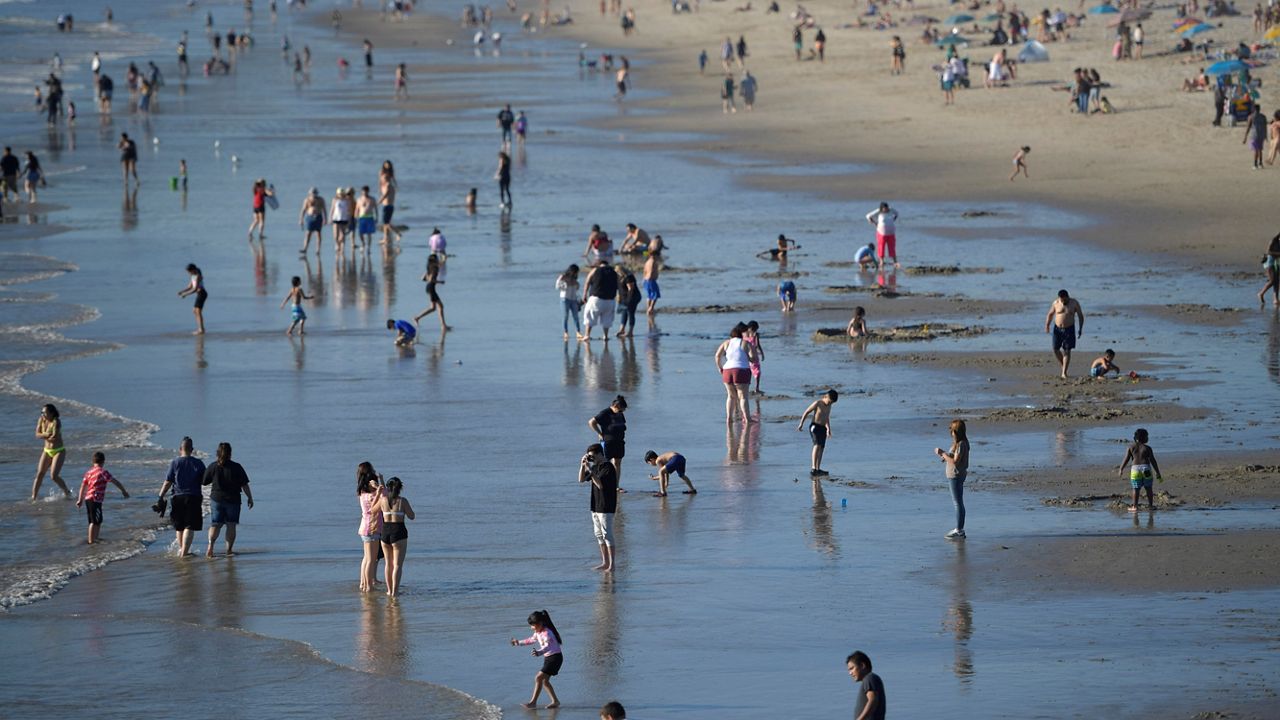SANTA MONICA, Calif. — The vast majority of California beaches are safe for swimming, according to the new 2022-2023 Heal the Bay Beach Report Card released Wednesday. Ninety-five percent of California beaches received a grade of A or B during the summer of 2022.
People who have contact with ocean water receiving a C grade or lower are at a greater risk of contracting illnesses like stomach flu, ear infections, upper respiratory infections and rashes, according to Heal the Bay, which assigned A to F letter grades to 500 California beaches based on fecal-indicator bacterial pollution levels measured in the ocean by health agencies and sanitation departments.
While most beaches received grades of A and B, Santa Monica Pier tied for first place on Heal the Bay’s list of Beach Bummers. The Santa Monica-based environmental advocacy group said the poor water quality is likely due to bird feces as the city works to replace bird deterrent netting under the pier.
Playa Blanca in Baja California, Mexico, south of Tijuana, tied Santa Monica for poorest water quality due to sewage-contaminated runoff from the Tijuana area and influxes of sewage from the Punta Bandera treatment plant north of the beach.
Other California beaches that did poorly: five stretches of coast in San Mateo County, the Tijuana River Mouth in San Diego County, Poche Beach in Orange County and Marina del Rey Mother’s Beach in LA County.
While Poche Beach received most of its polluted runoff from a storm drain flowing directly onto the beach, the pollution at Mother’s Beach was due to bird feces, according to the report.
Winter beach ratings were worse than summer. Just 56% of California beaches had good or excellent grades during the wet weather season as rain pushed increased amounts of pollutants and bacteria through storm drains into the ocean. Sewage spills also triggered beach closures.
Southern California had the largest increase in precipitation in the state, with a rainfall total of 102% greater than average, according to the report.
“As climate change continues to bring weather whiplash, our water woes will swing from scarcity to pollution,” Heal the Bay President and CEO Tracy Quinn said in a statement. “This year, record precipitation produced major impacts on water quality across Coastal California.”
Since 2017, Heal the Bay has also ranked freshwater recreation areas as part of a companion River Report Card. Just 65% of the sites the group monitored for its 2022 report indicated no water quality health risks; 15% presented moderate health risks and 19% were high risk.
While the monitoring locations in Angeles National Forest did not experience any bacteria exceedance in the summer of 2022, all the locations along the lower LA River had extremely poor water quality. Frequently testing with bacteria concentrations 10 times higher than other places in LA County, the lower LA River earned a place on the report card’s Freshwater Fails list.
Like the LA River, Tujunga Wash at Hansen Dam was especially high risk. Bull Creek and the Lake Balboa Boat Ramp in San Fernando Valley and Las Virgenes Creek at Crags Road in Malibu Creek State Park also had poor water quality, according to the report.



